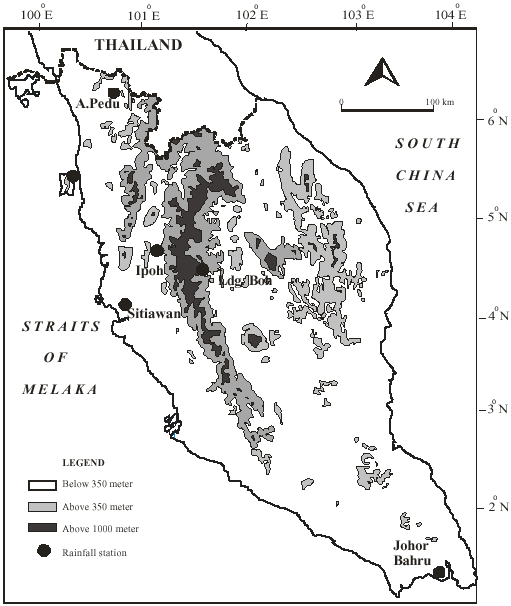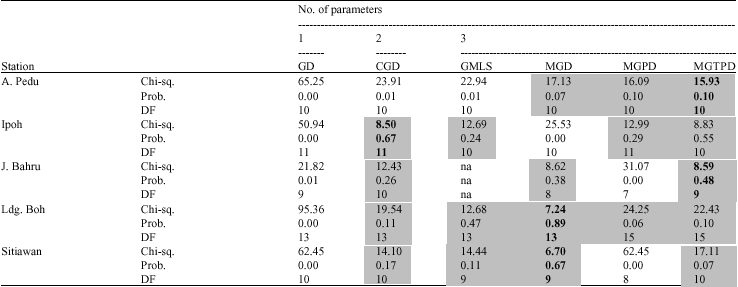Research Article
Mixed Geometric Truncated Poisson Model for Sequences of Wet Days
Centre for Statistical Studies, Faculty of Information Technology and Quantitative Sciences, Universiti Teknologi MARA (UiTM), 40450 Shah Alam, Selangor, Malaysia
Abdul Aziz Jemain
School of Mathematical Sciences, Faculty of Science and Technology, Universti Kebangsaan Malaysia, 43600 UKM Bangi, Selangor, Malaysia














